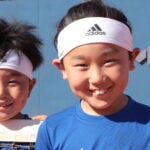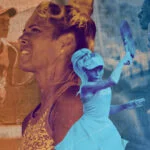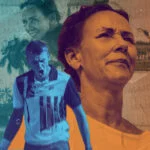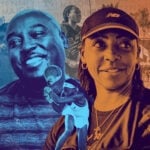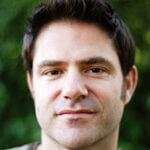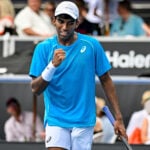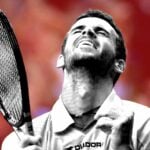Teodor Davidov in dad’s eyes – the ambidextrous phenom is evolving on and off the court
11-year-old Teodor Davidoff is making waves as a rising ambidextrous player with two forehands, but there is a lot more to him than that.
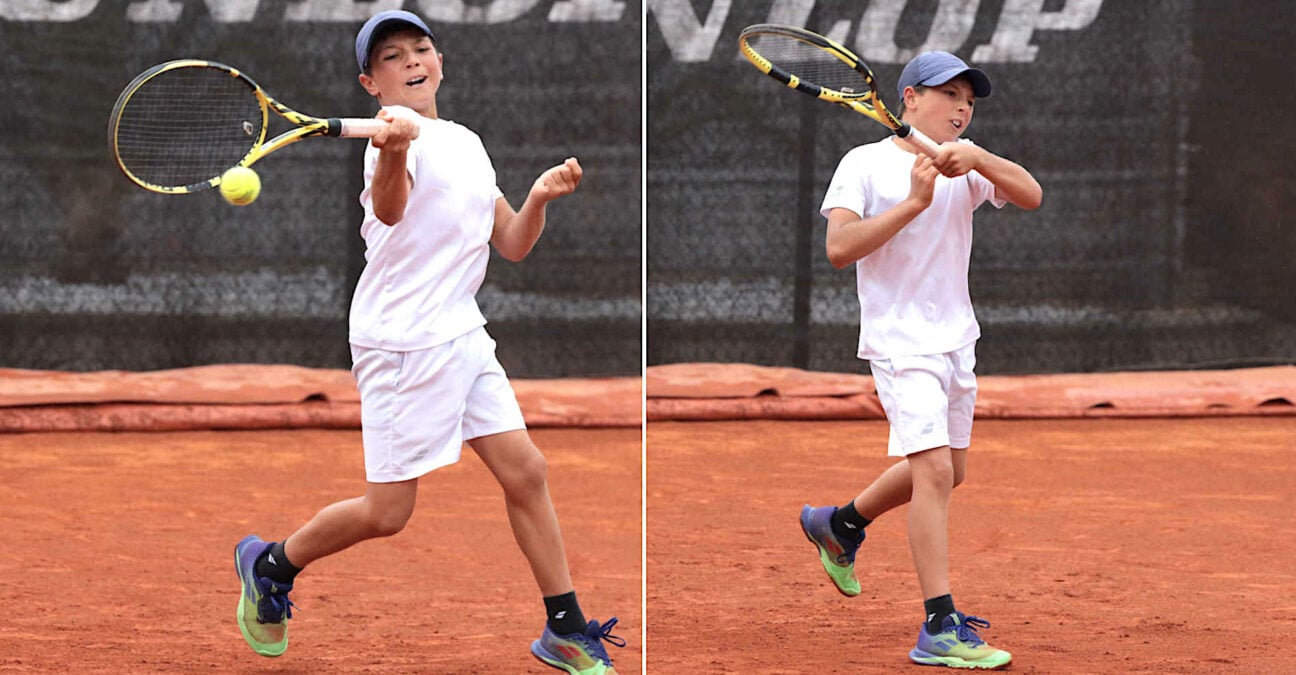 Teo Davidov playing two forehands at the Mouratoglou Academy, May 2022
Teo Davidov playing two forehands at the Mouratoglou Academy, May 2022
Teodor Davidov, the 11-year-old ambidextrous sensation that has captured the imagination of tennis fans ever since videos of him hitting left and right-handed forehands surfaced on the internet a little over a year ago (there are a few down the page if you have not witnessed this remarkable youngster strike the ball yet), may not use his backhand very often – but make no mistake: he does have one.
“Yes he has a backhand, and he actually has two backhands and they are pretty good,” Davidov’s father, Kalin, tells Tennis Majors.
Should we be surprised? When you are only 11 years old and have already put in your 10,000 hours on the tennis court, it’s natural to have all the shots. Even the ones you don’t plan on using all that often….
Davidov’s father : “The faster the pace the better”
Davidov believes his son won’t have to deploy his backhands very much, if it all, as he climbs up the junior – and hopefully professional – rankings.
I asked him recently if he worried that his son, who is currently the No 3-ranked American in the under-12 national rankings, would have problems handling the pace of bigger, stronger players, particularly with his left-handed forehand, which he began deploying less than four years ago, before his 8th birthday.
“As a matter of fact people who know him well and have seen him play on hard court against good players and older players have seen that the faster the pace the better he likes it and actually the better he performs,” he said. “So the faster the ball comes it is actually going to be to his advantage.”
He has figured out his own way to grip the racquet so it’s actually pretty efficient
Kalin Davidov
When I admitted I was curious to know if switching the racquet from the right to the left hand, or vice-versa, actually slowed down his preparation time, I was quickly corrected by Kalin. Teodor has learned to seamlessly switch hands, it’s a thoughtless, easy transition for him to make – pure muscle memory.
“It kind of happened and evolved naturally,” his father said. “He figured out his own way to do it, and it turned out to be pretty efficient.”
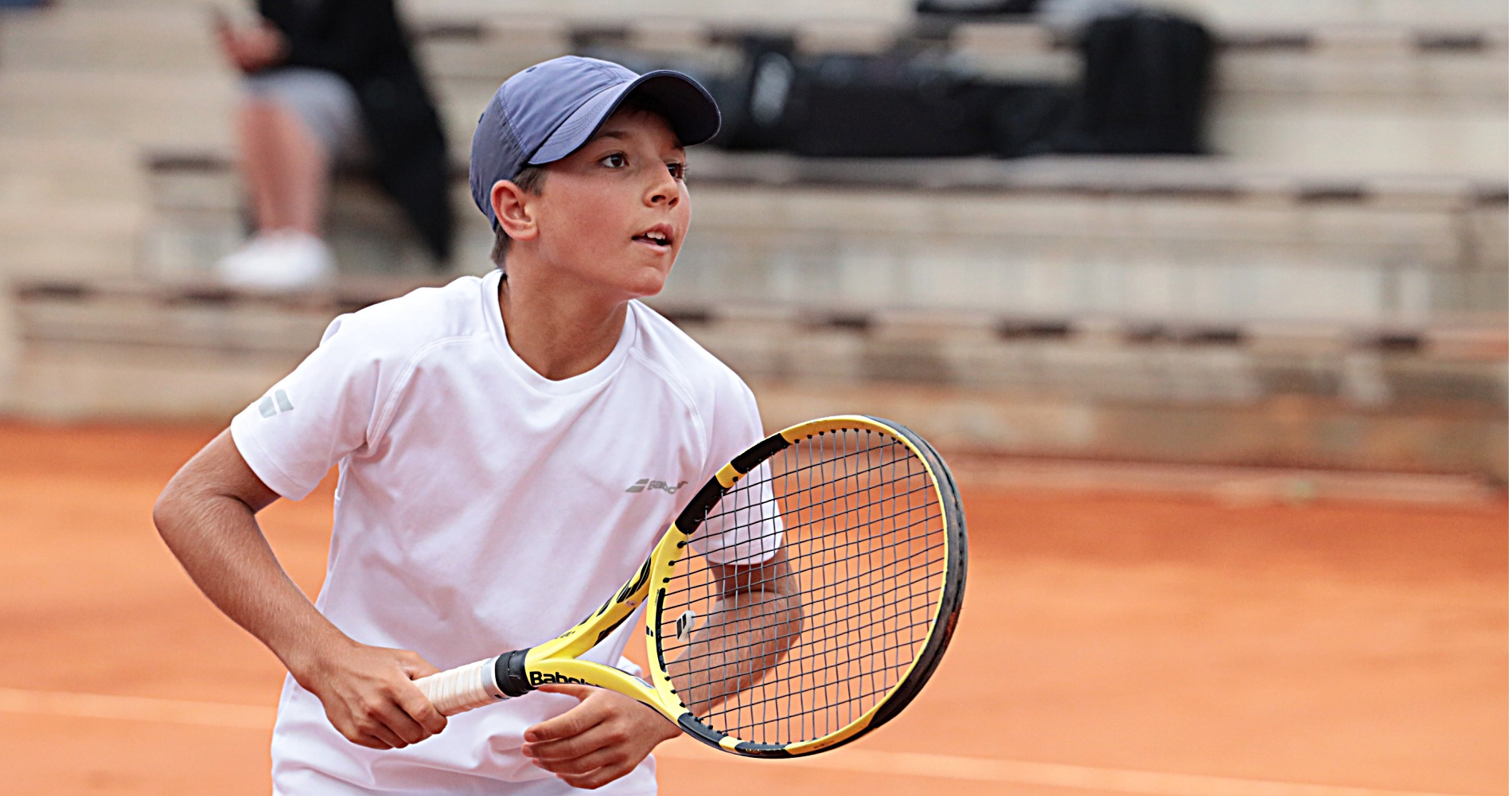
Davidov is always ready, no matter what side his opponent hits to.
“He doesn’t have to switch hands, they are both ready in a semi-western grip and he takes less time, actually, than conventional players who play forehand and backhand, so he doesn’t have to switch anything,” his father said. “His hands are ready in the right position. He has figured out his own way to grip the racquet so it’s actually pretty efficient, so I say it’s in his advantage that’s why he can be super aggressive on the return and he’s probably the most aggressive junior as far as the return is concerned.”
Left-handed forehand, right side of the brain
Davidov has become tennis’ first switch hitter, and it’s easy to get excited about the rare feat he is attempting to accomplish. But Teodor is still evolving, and learning on the job in the cutthroat world of junior tennis.
There are good days, and there are bad days, but never regrets. Kalin Davidov had a vision for his son, both as a tennis player and – more important – as a human being, and he is following his instinct and guiding his child in the way he knows best. He simply thought it would be nice for his son to use the left side of his body, and engage the right side of his brain.
“He doesn’t have to switch hands, they are both ready in a semi-western grip and he takes less time, actually, than conventional players who play forehand and backhand, so he doesn’t have to switch anything,”
Kalin Davidov
Here’s how he explains it:
“We know anatomically, physiologically the left side of the body is controlled by the right hemisphere of the brain and vice-versa, also the left hemisphere is the more rational one, the one that makes us more extroverted, and the right hemisphere is the more meditative one.”
He continues, enjoying a conversation that he has no doubt had hundreds of times with reporters who are curious about this talented, nonconforming son of his.
“Teo’s personality is very fiery, he’s very social and extroverted, but he’s lacking in the ability to relax a little, to be able to sit and focus and to be able to be more meditative, more creative, etc… so I wanted to experiment…”
Davidov said he isn’t sure of the effects the “experiment” have had on Teo’s personality, but he believes his son will benefit physically in many ways from the decision to play ambidextrous tennis.
“I have no scientific data or proof of whether it works or not on a personality level but for sure it works physiologically and anatomically, and his body is going to be much more balanced compared to all the other tennis players that we always see, how the dominant arm is so much bigger and much stronger and much more susceptible to injuries on one side of the body because of the unevenness,” he said, adding:
“I always search or balance in life, whether it’s yoga or Chinese medicine, I’ve always disliked the imbalance of tennis, cause and effect on the physical body, so I was looking for things to balance and decided to give it a try.”
“I think it might even become his best surface. It’s hard to predict but I think there is no logical reason for it not to happen.”
Kalin Davidov on his son Teo
In theory, Davidov’s manner of playing tennis has been a revolution a long time in the making. The forehand is the dominant wing for 99 percent of tennis players, so why not have two of them?
Clearly it isn’t holding the kid back. Davidov won the prestigious Eddie Herr International Tennis Championships in Bradenton, Florida last year, and he’s now competing in the 14-and-under division. Earlier this month he reached the quarter-finals of an important Level-2 event in Mobile, Alabama.
Davidov learning – and thriving on the clay
This spring Teodor traveled to Europe to train at the Patrick Mouratoglou Academy before he ventured to Greece to compete in the IMG Future Stars event.
It was a great opportunity for Davidov to get more familiar with the red clay of Europe, which is a slower surface than the green Har-Tru clay that is common in Florida, where Davidov lives and trains.
Red clay might even become his best surface
Kalin Davidov
“I think ultimately he’s going to become very good on red clay,” Davidov’s father says. “I think it might even become his best surface. It’s hard to predict but I think there is no logical reason for it not to happen. With the two forehands he has a lot of angles, and he also has actually very good drop shots. He just needs to become a little more patient and understand the surface a bit better.”
At first glance it may seem that the Davidov’s are one of those all or nothing tennis families that are risking all their identity and finances as they push talented Teodor in the direction of a professional career. But Kalin insists that tennis is just a vehicle, a tool to allow his son to grow into a diverse, well-rounded, enlightened young man.
Tennis as a vehicle
“Tennis is just a small part of the picture,” he says. “For me tennis is a tool to make him a better person, to make him grow. Tennis is like yoga – we are deeply involved in that yoga lifestyle with my wife and our family – and for me tennis is just a game. It is temporary, and just a tool, an instrument to make him a better person, to stimulate the expansion of his awareness.”
Awareness for an 11-year-old? Clearly Teodor is developing on and off the court, something that can’t be said of all aspiring juniors. Davidov and his wife Elena have spent time in India studying yoga and ayurvedic medicine, and they hope to include Teodor on their journey, ideally expanding his consciousness as they add to his growing arsenal of tennis weapons.
And tennis is the perfect vehicle for young Teodor, they say.
“Because he is so young and so fiery and so proactive I always think tennis is a good tool to use to channel his energy, because he is not someone that can close the eyes and fix his focus in one point or process and expect him to do practice of concentration or meditation,” Davidov says.
Confidence in Davidov’s tennis
Though the focus is well-rounded, the confidence in Davidov’s tennis capacity is strong. Kalin is convinced that Teodor will be a professional player in the future, but stresses that achieving that goal would be just part of the picture of his diverse development as a human.
“Whether he becomes a pro player or not, it’s irrelevant, honestly,” he said. “It’s out of our control; it’s higher forces, life has its own logic so whatever happens we can just perform the actions to the best of our ability and not expect – whatever comes, comes, so we’ll see.
“But I think he’s going to be a pro player but it doesn’t mean that all his life is going to be tennis. We are trying to build a multidimensional person on and off the court.”
